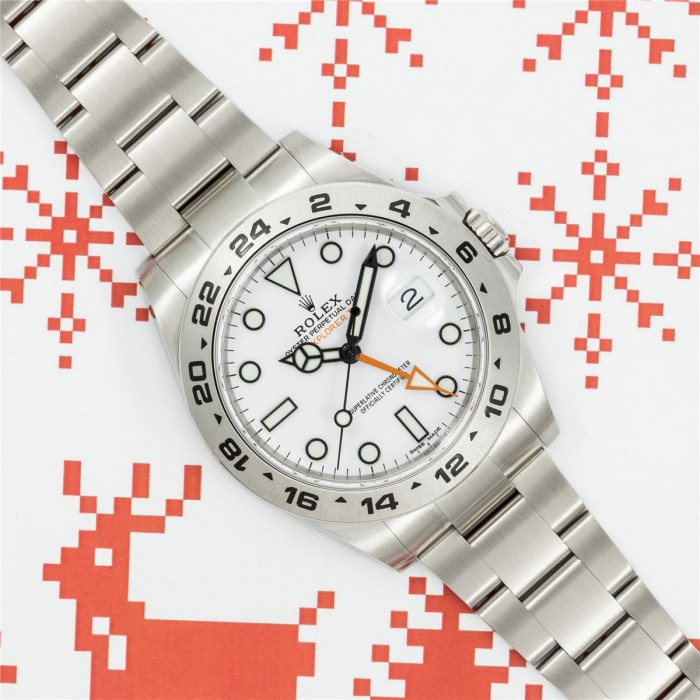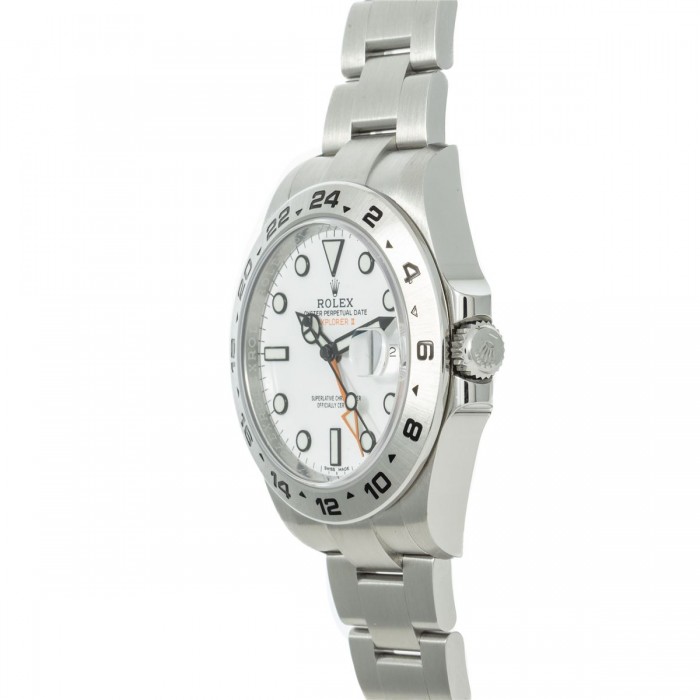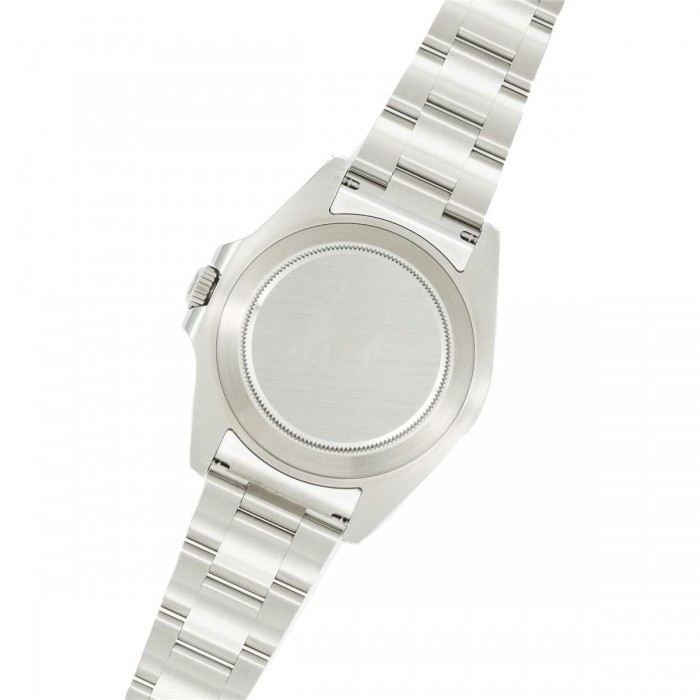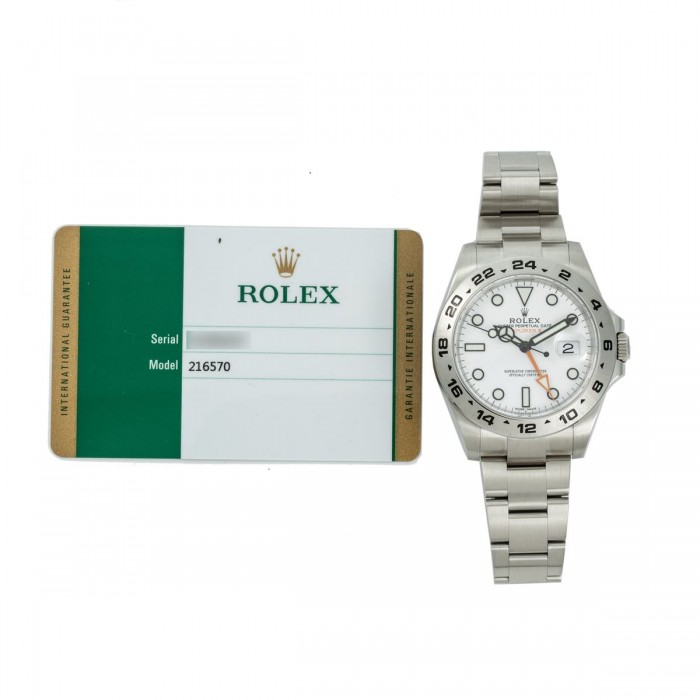Why We Love It
With its unusual origin as a spelunker's tool, the Explorer II is a bit of an outlier among Rolex’s other sports watches in terms of its original intended use, but it has become one of the most revered and appreciated models in the catalog amongst collectors today.
Introduced in 2011 for the 40th anniversary of the Explorer II, the Reference 216570 firmly sets in Rolex's sports lineup as a thoroughbred tool watch. Offered exclusively in 904L stainless steel, these watches share all the key design cues with previous iterations of the Explorer II, yet are unapologetically modern. Featuring a more contemporary 42mm size, modern movement components, and the fantastic updated Oyster bracelet with solid ends and a locking clasp with Easylink, the Reference 216570 and are more robust and legible than ever.
This particular example remains in fantastic condition throughout, with an excellent case, a flawless Polar dial and handset, and a matching Oyster bracelet. Additionally, this piece comes with its serialized hangtag and warranty card dating to circa 2018.
If you're hesitant to start down the vintage road - or simply need of a robust modern classic that can take a beating, this Explorer II will do the trick.
The Explorer II Story
The Rolex Explorer II has never been accused of being staid, wimpy or dainty.
Worn by scientists and (you guessed it!) explorers into some of the more inhospitable regions on the planet, the Rolex Explorer II was from its birth designed to buck the presumptions of what a wristwatch could bear.
Rolex has long been the watch of exploration and early on, Rolex technicians subjected their timepieces to the worst Mother Nature could conjure; whether traversing the English Channel, breaking land-speed records or climbing Mount Everest, there's a good chance Rolex was involved.
The Explorer line traces its origins to the famous mountain and Sir Edmund Hillary's successful ascension of it in 1953, but numerous historic moments were marked by the presence of the Explorer and its descendent, the Explorer II. Ed Viesturs, the only American to climb all 14 of the globe's eight-thousander peaks (and the fifth person to ever do so without supplemental oxygen); Jean Troillet, the Swiss/Canadian who set the speed record for climbing the Matterhorn (at 21-years-old nonetheless) and was the first person to snowboard down Everest; and Alain Hubert, world-renowned Polar explorer who achieved a world-record cross of the Antarctic continent, all proudly wore the Rolex Explorer II on their expeditions.
The Explorer II is definitely a timepiece for the man who craves something a little different from his sport model Rolex. Released in 1971 as a follow up to the original Explorer made famous by mountaineers in the 1950s, the Explorer II utilized a larger Oyster case design more in line with the sports models already offered (the Submariner and GMT-Master). Featuring a four-hand display with a large and distinctive 24-hour pointer hand, the Explorer II was essentially a GMT-Master with one notable difference: a fixed steel bezel was installed in place of the characteristic two-tone from the aviator's model.
The reason for this fixed bezel was the target demographic: speleologists, or subterranean explorers. This hearty breed of mankind spends days on end underneath the surface of the earth and without seeing the sky, and are prone to losing track of daytime hours. The 24-hour hand would point to the appropriate place on the fixed 24-Hour bezel indicating whether it was AM or PM.
While the original Explorer was designed to go into the clouds, the Explorer II was designed to descend into darkness.

No questions about this product, be the first and ask your question.

















